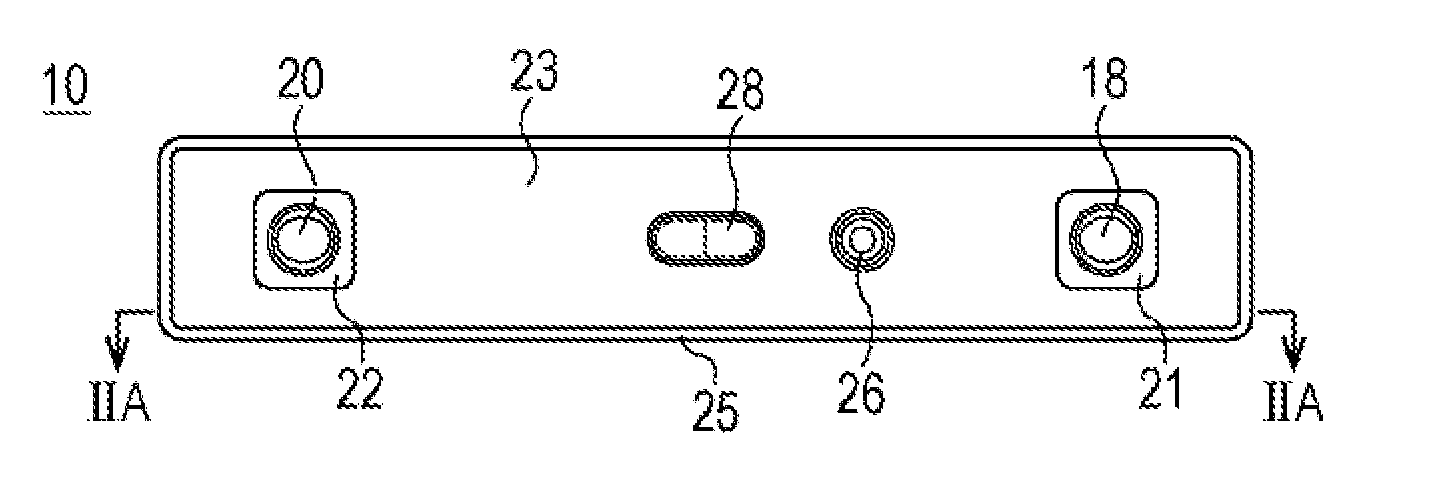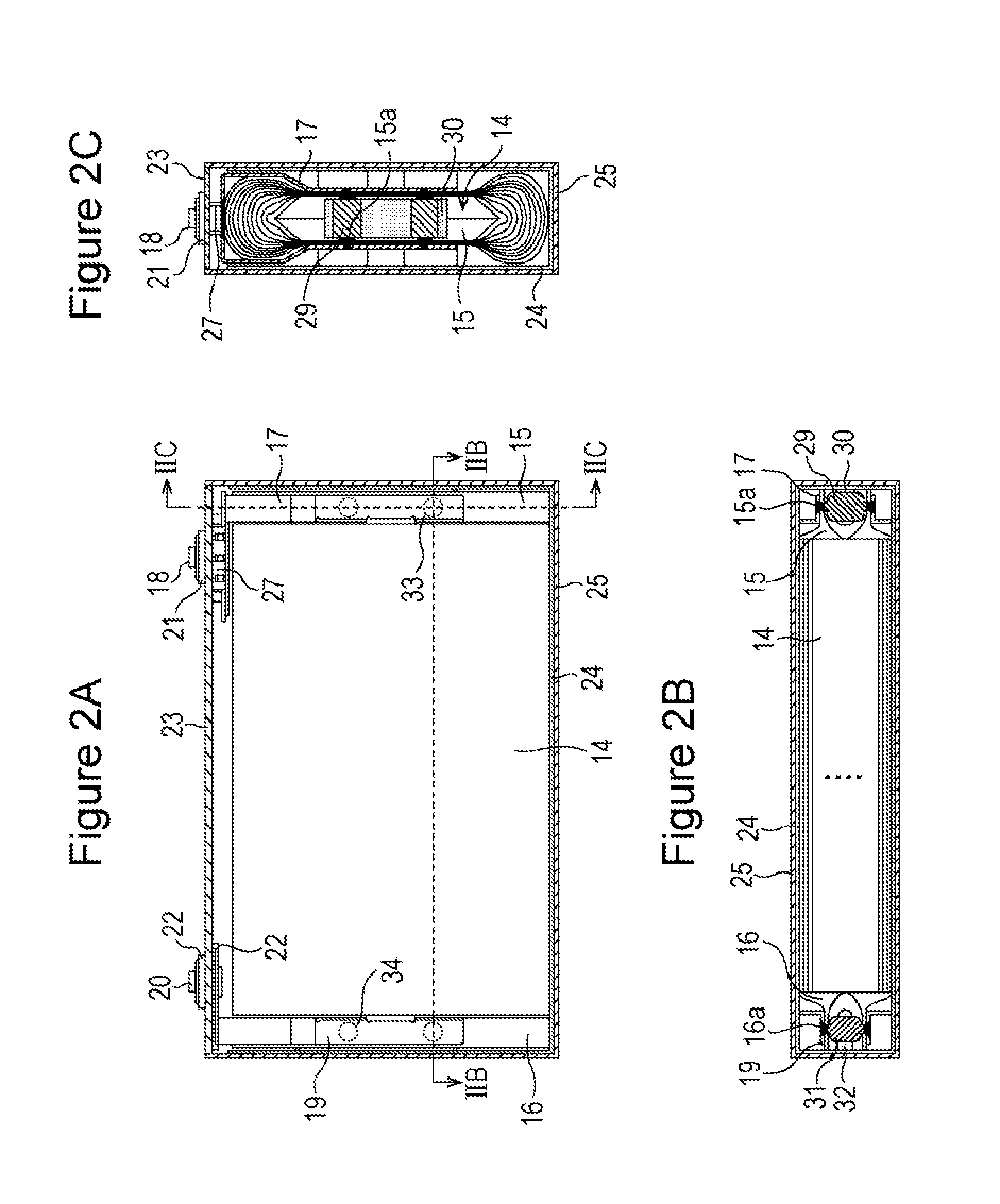Nonaqueous electrolyte secondary battery
a secondary battery and electrolyte technology, applied in the direction of batteries, cell components, sustainable manufacturing/processing, etc., can solve the problems of battery characteristics being degraded and safety degradation after charge-discharge cycle, and achieve the effect of good safety at the time of overcharge and breathing through gas
- Summary
- Abstract
- Description
- Claims
- Application Information
AI Technical Summary
Benefits of technology
Problems solved by technology
Method used
Image
Examples
embodiments
[0039]To begin with, a non-aqueous electrolyte secondary battery according to an embodiment is described with reference to FIG. 1 to FIG. 4. As shown in FIG. 4, this non-aqueous electrolyte secondary battery 10 includes a flat rolled electrode assembly 14 in which a positive electrode plate 11 and a negative electrode plate 12 in the state of being insulated from each other with a separator 13 therebetween are rolled. The outermost surface side of this flat rolled electrode assembly is covered with the separator 13, and the negative electrode plate 12 is arranged on the side nearer to the outer circumference than the positive electrode plate 11 is.
[0040]As shown in FIG. 3A, a positive electrode mix layer 11a is disposed on both surfaces of a positive electrode core body made of aluminum or aluminum alloy foil having a thickness of about 10 to 20 μm in such a way that the positive electrode core body comes into the state of being exposed in the shape of a belt along the end portion o...
PUM
| Property | Measurement | Unit |
|---|---|---|
| thickness | aaaaa | aaaaa |
| thickness | aaaaa | aaaaa |
| battery capacity | aaaaa | aaaaa |
Abstract
Description
Claims
Application Information
 Login to View More
Login to View More - R&D
- Intellectual Property
- Life Sciences
- Materials
- Tech Scout
- Unparalleled Data Quality
- Higher Quality Content
- 60% Fewer Hallucinations
Browse by: Latest US Patents, China's latest patents, Technical Efficacy Thesaurus, Application Domain, Technology Topic, Popular Technical Reports.
© 2025 PatSnap. All rights reserved.Legal|Privacy policy|Modern Slavery Act Transparency Statement|Sitemap|About US| Contact US: help@patsnap.com



